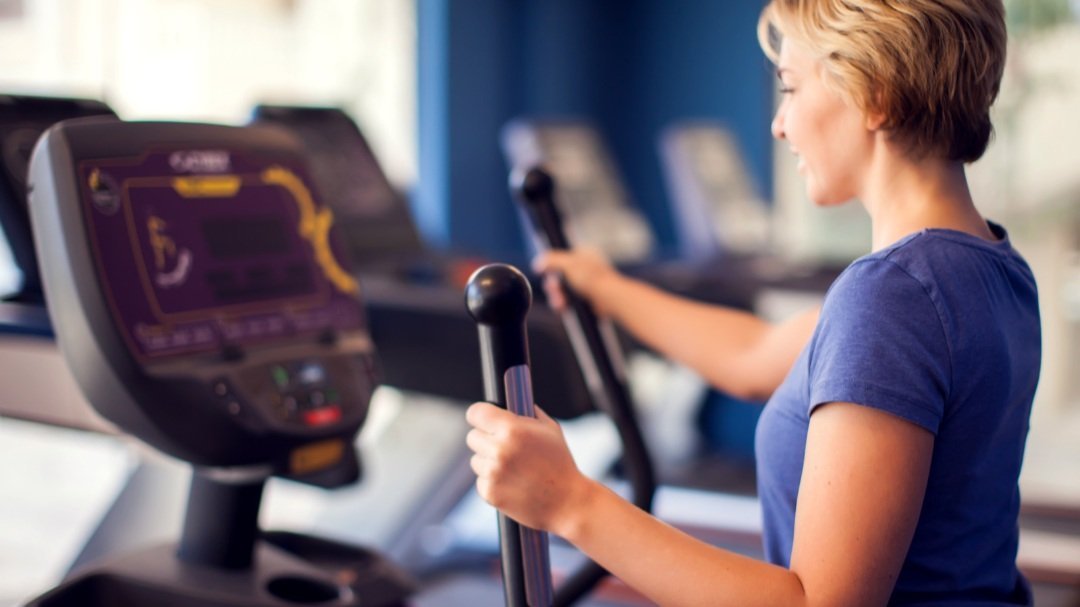Debunking the Myth of the Fat Burning Zone
Treadmill cardio fat burning
When it comes to cardiovascular exercise, there is a prevalent belief that targeting the so-called "fat burning zone" is one of the best things you can do to shed unwanted fat. This notion suggests that exercising at a specific intensity level will optimize fat loss. However, scientific research has debunked the fat burning zone myth time and time again, highlighting that overall calorie burn plays a far more significant role in achieving sustainable fat loss. In this article, we will delve into the reasons why focusing on burning calories overall is more important for effective and lasting fat loss.
Understanding the Fat Burning Zone
The fat burning zone is often defined as exercising at a low to moderate intensity (approximately 50-70% of your maximum heart rate). The theory behind this concept is that working out at a lower intensity primarily utilizes fat as the primary energy source, thus leading to increased fat burning. Proponents of this theory argue that exercising at a higher intensity primarily burns carbohydrates instead of fat.
The RER
RER stands for “Respiratory Exchange Ratio”. All that means is that different exercise intensities/demands prioritize different ratios of fat:glucose. For example: More intense exercise (say 90% intensity) will utilize mostly glucose as energy. On the other hand, exercising at a lower intensity (say 50%) will utilize fat as the main energy burning source.
This has made some people believe that exercising at a lower intensity will elicit better fat loss results. In theory that could make sense because you’re burning more fat as a fuel source instead of carbohydrates.
However, you’ll see that this is not the case..
The Reality: Fat Loss Requires a Caloric Deficit
While it is true that exercising at lower intensities relies more on fat as a fuel source, it is essential to understand the bigger picture. To lose weight and body fat, you need to create a caloric deficit, which means burning more calories than you consume. The notion of the fat burning zone fails to acknowledge that the total number of calories burned during a workout is what matters most for fat loss.
The Role of Intensity in Calorie Burn:
While lower-intensity workouts might rely more on fat as a fuel source, they tend to burn fewer calories overall. On the other hand, higher-intensity exercises, such as interval training or high-intensity interval training (HIIT), may rely more on carbohydrates but have a higher total caloric expenditure due to the increased intensity. The greater caloric burn during high-intensity workouts ultimately contributes to a larger caloric deficit, which is vital for fat loss.
*When you’re in a calorie deficit, your body will burn fat as fuel regardless of the type of exercise you’re doing. This is why it’s more important to burn more calories overall and not worry about the fat:glucose ratio during a cardio session.
*Higher intensity exercise will ALWAYS BURN MORE CALORIES THAN LOWER INTENSITY.
*Not only that, but higher intensity also has a bigger effect on your post workout metabolism - as you’ll see in the next paragraph.
Afterburn Effect:
Another crucial factor to consider is the afterburn effect, scientifically known as excess post-exercise oxygen consumption (EPOC). High-intensity workouts, such as HIIT, have been shown to elevate the metabolic rate for an extended period after exercise. This means that even after you've completed your workout, your body continues to burn calories at an increased rate. The afterburn effect, coupled with the higher total caloric expenditure, further reinforces the significance of higher-intensity workouts in promoting fat loss.
The crazy thing is when you do low intensity cardio, you get little to no afterburn effect! But with higher intensity exercise (above 70%) your body will have an increased afterburn effect.
Don’t Forget About Building Lean Muscle Mass:
The inclusion of higher intensity cardio can actually lead to some small gains in muscle mass because there is enough of a demand on the muscles to adapt. This will also help burn fat compared to lower intensity cardio.
Focusing solely on burning fat during exercise overlooks the importance of building and maintaining lean muscle mass. Resistance training and high-intensity exercises can help increase muscle mass, which, in turn, boosts your resting metabolic rate. Muscle tissue requires more energy to maintain, leading to an increased resting calorie burn throughout the day of up to 10% of your metabolism. By prioritizing overall calorie burn through various exercises, you can stimulate muscle growth while burning fat, creating a more toned and defined physique.
Don’t Hate On Low Intensity Cardio:
Low intensity cardio DOES have it’s benefits.
It still improves your baseline cardiovascular health and performance compared to no exercise.
It can allow you to exercise lightly without too much wear and tear on your joints or muscles.
It allows for improved blood flow around the body which can be good from a recovery and overall health standpoint.
It still burns more calories than no exercise.
Let’s Wrap It Up
While the idea of a fat burning zone may seem appealing, the truth is that overall calorie burn is the key to effective fat loss. By focusing on creating a caloric deficit through a combination of cardiovascular exercise, resistance training, and a balanced diet, you can achieve sustainable and long-term fat loss results. Emphasizing higher-intensity workouts that burn more calories and promote muscle growth, coupled with the afterburn effect, offers a more efficient way to reach your fat loss goals. So, don't fall for the myth of the fat burning zone; instead, prioritize total calorie burn to achieve the body you desire.
If you’re having trouble with losing fat or improving your cardio, WE CAN HELP! Drop us a line at info@clearcut-fitness.com or visit the link below to apply for personal training with us:

